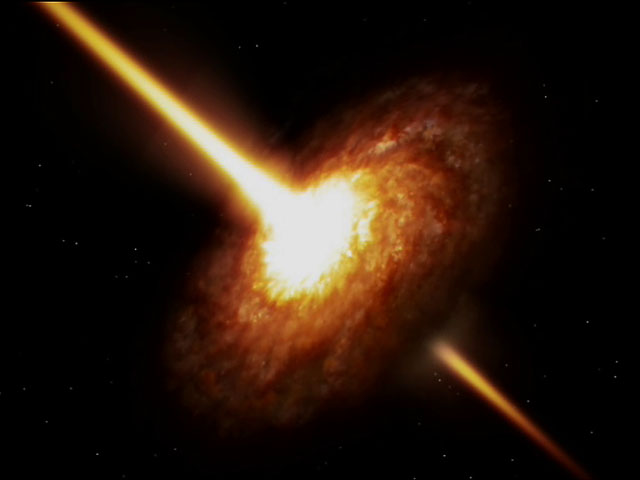 |
| Sir Isaac Newton found the theory of Universal Law of Gravitation after an apple fell on his head. |
Saturday, April 25, 2015
Gravitational Pull; Gravity
Gravity
 Gravity is the natural, invisible force that pulls things in. Without gravity, all of the planets, stars, Earthlings, Earthlings' properties, and etc. can go flying all around the universe. Earthlings can die if there weren't any gravity pulling them in. Gravitational pull from the sun is what keeps the planets in their orbits. It is the force that acts upon everything.
Gravity is the natural, invisible force that pulls things in. Without gravity, all of the planets, stars, Earthlings, Earthlings' properties, and etc. can go flying all around the universe. Earthlings can die if there weren't any gravity pulling them in. Gravitational pull from the sun is what keeps the planets in their orbits. It is the force that acts upon everything.
The modern idea of gravity came from Galileo Galilei. He and his assistant were standing on the Tower of Pisa, holding up two balls. The balls were different sizes: one small and one big. When the balls were released, they hit the Earth ground at the same time. Galileo did this experiment again rolling down the ball using inclines. The balls hit the Earth ground at the same time again.Galileo showed that gravity makes things fall at the same rate. Sir Isaac Newton, an English mathematician, developed the Universal Law of Gravitation which helped scientists with their discoveries of planets and other theories.
Saturday, April 18, 2015
Quasars
Quasars
 Quasars are probably the brightest objects in the universe. That is because of billions or trillions of electrons that surround it. The energy from the electrons can outshine the stars in the same galaxy as the quasar. They are humongous and have super large masses. Quasars can only exist if there are super massive black holes because the black holes are the accelerators of the quasars. While only some dust and gases get to go in the black hole, most of it gets pushed away in two lines opposite of each other. They can be pushed away at almost the speed of light. One line is located on top of the black hole and the other is located below the black hole. The lines contain volts of charged gases. Quasars probably last for billions of years.
Quasars are probably the brightest objects in the universe. That is because of billions or trillions of electrons that surround it. The energy from the electrons can outshine the stars in the same galaxy as the quasar. They are humongous and have super large masses. Quasars can only exist if there are super massive black holes because the black holes are the accelerators of the quasars. While only some dust and gases get to go in the black hole, most of it gets pushed away in two lines opposite of each other. They can be pushed away at almost the speed of light. One line is located on top of the black hole and the other is located below the black hole. The lines contain volts of charged gases. Quasars probably last for billions of years.
A lot of people get mixed up with what pulsars and quasars are. They think that they are the same things, but they're not. Pulsars are neutron stars that move and spin fast because of their super strong gravitational pull. It pulls in everything, which makes it spin fast. The two streaks of light coming out of the neutron star are made of radioactive waves, unlike the charged gases that come out of the quasar.
A super massive black hole eats everything that is coming its way. It becomes inactive when nothing is close to it. Scientists haven't figured out how quasars are formed yet, but as technology advances, surly we will find the answers to our questions.

 Quasars are probably the brightest objects in the universe. That is because of billions or trillions of electrons that surround it. The energy from the electrons can outshine the stars in the same galaxy as the quasar. They are humongous and have super large masses. Quasars can only exist if there are super massive black holes because the black holes are the accelerators of the quasars. While only some dust and gases get to go in the black hole, most of it gets pushed away in two lines opposite of each other. They can be pushed away at almost the speed of light. One line is located on top of the black hole and the other is located below the black hole. The lines contain volts of charged gases. Quasars probably last for billions of years.
Quasars are probably the brightest objects in the universe. That is because of billions or trillions of electrons that surround it. The energy from the electrons can outshine the stars in the same galaxy as the quasar. They are humongous and have super large masses. Quasars can only exist if there are super massive black holes because the black holes are the accelerators of the quasars. While only some dust and gases get to go in the black hole, most of it gets pushed away in two lines opposite of each other. They can be pushed away at almost the speed of light. One line is located on top of the black hole and the other is located below the black hole. The lines contain volts of charged gases. Quasars probably last for billions of years.A lot of people get mixed up with what pulsars and quasars are. They think that they are the same things, but they're not. Pulsars are neutron stars that move and spin fast because of their super strong gravitational pull. It pulls in everything, which makes it spin fast. The two streaks of light coming out of the neutron star are made of radioactive waves, unlike the charged gases that come out of the quasar.
A super massive black hole eats everything that is coming its way. It becomes inactive when nothing is close to it. Scientists haven't figured out how quasars are formed yet, but as technology advances, surly we will find the answers to our questions.

Saturday, April 11, 2015
Pulsars
Pulsars
Pulsars are formed when stars die down and are in a process called supernova. As the star collapses, the core begins to compact all of the neutrons in the star onto itself because of its super strong gravitational pull. The cluster begins to spin faster and faster. It's like an ice skater pulling their arms in so that they can spin faster. After this process, the cluster becomes a rapidly spinning ball of neutrons covered by an iron shell. The shell would be smoothed out because of the strong gravitational pull of the core. This creates a pulsar. Pulsars are smaller than the original old star but they weigh 1.4 times more because of the extreme gravity pulling things inward, making things on the pulsar heavier than they actually are. Pulsars are basically neutron stars that spin quickly and has a super strong magnetic field.
Pulsars emit every kind of wave in the electromagnetic spectrum. The first pulsar found was emitting radio waves. Spinning at an incredible speed, the waves were like pulsing into the air. ("Puls"ars) Because of its strong magnetic field, the waves would pulse out in the North and South sides of the star. The waves only emit on the North and South sides because of magnetic fields having ends on the two sides. The pulsing happens every second on each pulsar. Try imaging a pulsar emitting gamma rays and being close to Earth. We would be super lucky if the North and South didn't face our direction!

 |
| The two streaks of light opposite of each other are the North and South sides of the pulsar, which are emitting radioactive waves. |
Pulsars emit every kind of wave in the electromagnetic spectrum. The first pulsar found was emitting radio waves. Spinning at an incredible speed, the waves were like pulsing into the air. ("Puls"ars) Because of its strong magnetic field, the waves would pulse out in the North and South sides of the star. The waves only emit on the North and South sides because of magnetic fields having ends on the two sides. The pulsing happens every second on each pulsar. Try imaging a pulsar emitting gamma rays and being close to Earth. We would be super lucky if the North and South didn't face our direction!

Subscribe to:
Posts (Atom)